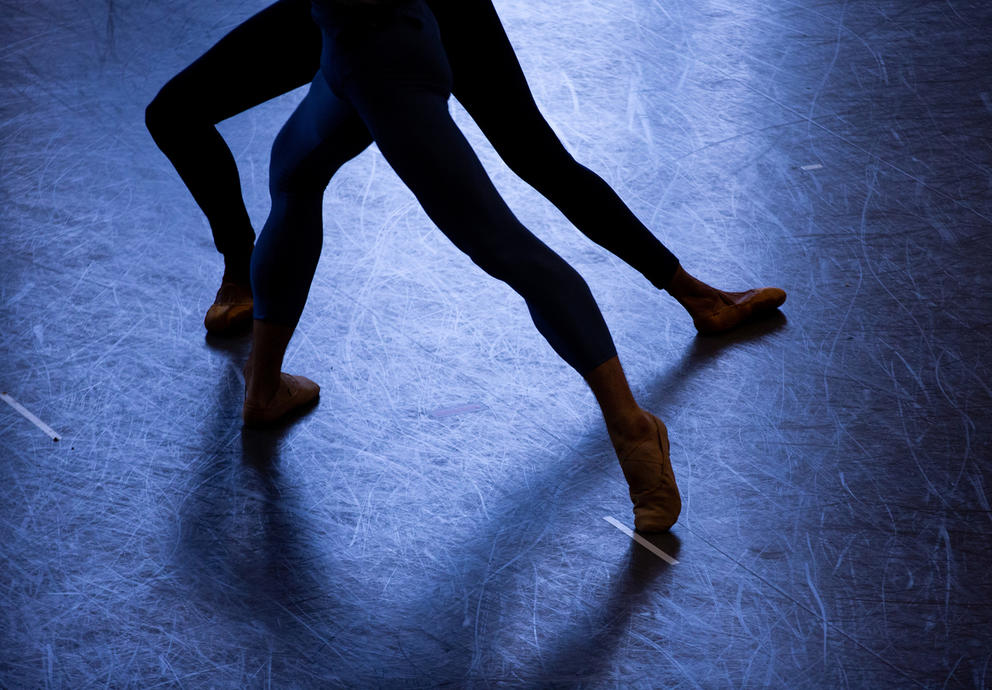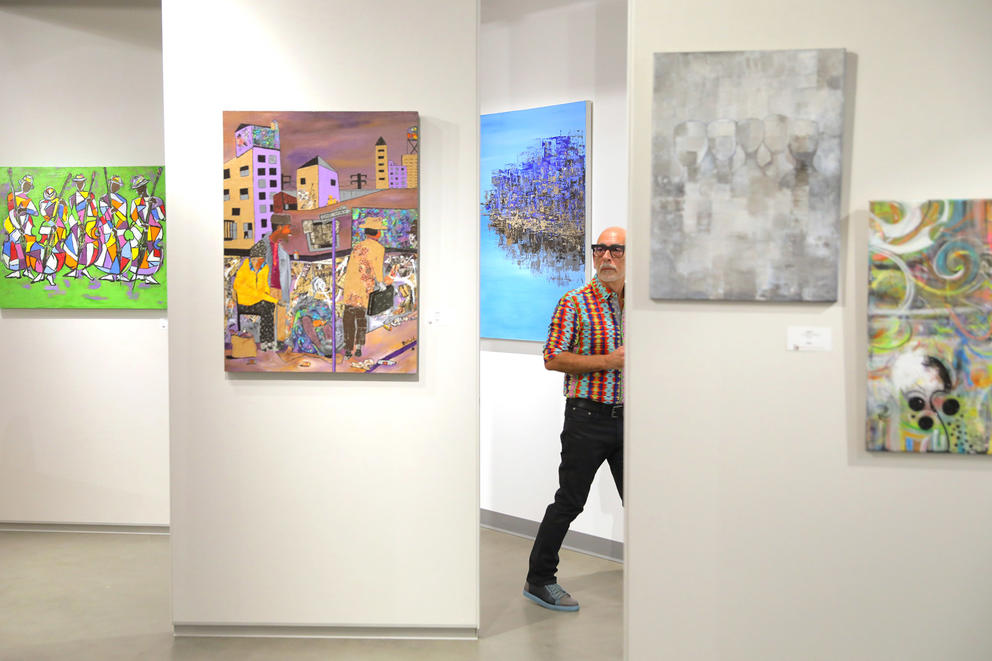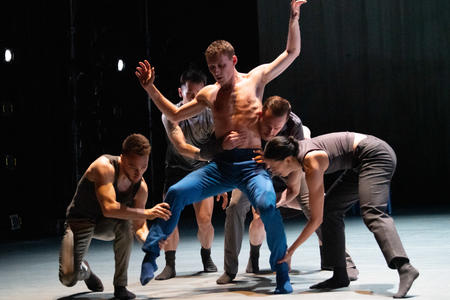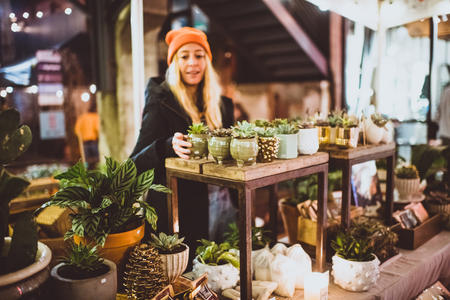The situation is so dire that, according to a report Crosscut covered earlier this year, some local creatives are considering leaving the local arts and culture sector — or the region altogether. While the report laid out a detailed matrix of solutions and strategies to stop the creative brain drain, those suggestions were mainly directed at the nonprofit, business and government sectors. But what’s an individual supposed to do?
As one Crosscut reader put it in an email to us: “While my resources are limited, I’d like to be able to help…. Suggestions are welcome.”
With end-of-year giving in mind, we took this question to heart — and asked more than two dozen artists and arts supporters: What can people do, as individuals, to keep arts alive in Seattle?
We’ve compiled these suggestions into a handy 12-point action plan, an evergreen resource you can keep coming back to, even as you “level up” your art support.
This story is part of a series called Reviving Seattle Arts
1. Show up
The number-one piece of advice we heard repeatedly is pretty straightforward and doesn’t have to cost anything but your time: Show up.
“Being an audience member is a form of activism. It is showing up and supporting something you want to exist,” says local storyteller and comedian Emmett Montgomery. Plus, “it's a great way for Seattleites to make friends and find fulfillment that is outside of their work life,” says local artist and designer C.M. Ruiz.
It can be overwhelming to know where to start, but your neighborhood is a good point of departure, says comedian and comics artist Brett Hamil. “I'm a strong believer in ‘hyperlocalism,’” Hamil says. “For me, the best way to build up the arts is by starting where you live and working your way out.” Google or Instagram can help you determine when and where art walks, readings or performances are happening in your neighborhood. In case you missed it, Crosscut publishes curated lists of local “things to do” — many of them free — and covers openings and events in its weekly arts and culture newsletter (and in a host of stories, of course). Other local websites, like The Ticket, can also help you find what’s happening in your neck of the woods.
And if you’re already doing all of the above, consider mixing things up: Challenge yourself to attend events that showcase art forms different from those you usually seek out, go to a new or new-to-you venue, venture into a new neighborhood — take a chance, take risks. Even if you don't love it, you'll have something to talk about with your friends — and you're building context for future arts going.
2. Keep it local and indie
If you’re interested in dance, theater or musicals, prioritize shows by local artists and art groups in your arts-spending budget. This helps ensure more money will flow to local creators (vs. national and international touring productions and artists). If you enjoy music, try attending concerts in small indie venues. “For that one Taylor Swift ticket that cost $300, you could see 20 amazing local shows,” says Ben London of Seattle music nonprofit Black Fret.
“We need to stop treating the word local like it means ‘less than’...Local should be a badge of honor,” Emmett Montgomery says. He hopes people think through how they spend their dollars. “Consider spending as much as you do on entertainment that profits corporations — streaming services etc. — on independent artists. The dollars you spend at a local show have a direct impact on keeping the doors open…. You are feeding people; you are keeping the lights on; you are letting them know that you care about what they do.”
Plus, Montgomery adds: “This doesn’t just go for live shows, go to independent bookstores (Ada’s, Nook and Cranny, Elliott Bay, etc.) and movie theaters (NWFF, The Grand Illusion, Ark Lodge) and other spaces (Scarecrow Video, Push/Pull, Ugly Baby) that give this city its soul.”
3. Tell your friends — and everyone else
It’s an overused adage, but word-of-mouth truly is the best PR. Loved a show? “Tell a friend, post a flier at work, post or share about it on social media, write a favorable comment on the event’s social media page, ‘like’ the event or art organization page — anything and everything helps,” says Kathy Hsieh, a local theater artist and arts advocate.
Showing and sharing interest is a direct gesture of support that doesn’t cost anything, says Seattle visual artist Anthony White. And when it comes to social media, “You know the drill: like, follow, share, subscribe,” White says.
What should you share? “Share where the artists are showing, what their websites are, where their art can be seen and purchased,” says independent curator and arts writer Sharon Arnold. “I think folks should also sign up for newsletters and share, share, and share with the rest of their community.”
Curator Jeremy Buben — whose own Instagram is a good portal into visual-art happenings and interesting local artists — recommends sharing posts from artists and galleries you like, as well as the art you're seeing out on art walks. “And definitely share the art you are buying,” Buben says.
4. Bring a friend
Are you already checking all of the above boxes? Take it one step further and don’t just tell a friend, bring a friend. “Consider inviting someone to go with you who may be otherwise less inclined,” says local dancer and Seattle Dance Collective co-founder James Yoichi Moore. “Chances are they will be surprised and enjoy themselves more than expected. After all, it only takes one life-changing experience in the theater to create a lifelong fan of the arts.”
Why not make it a social outing and gather your friends to attend a performance or art show together? Plus, says Olivier Wevers of local dance company Whim W’Him: “Go to dinner before in a local restaurant and inject fuel in the local economy.”
Sharon Arnold offers this advice, particularly apropos so close to the holidays: Buy event tickets or memberships to a local arts organization as gifts for friends or family. “I don't think we explore the impact of getting our community involved through our direct advocacy enough!” Arnold says.
5. Reach out
“When you see or experience something great at an arts and cultural organization, let them know,” says Kathy Hsieh. “Many do this work because we love it, but it’s a lot of work for very little — sometimes for no money. So knowing that people are finding joy… seeing the world in a new way, or feeling less alone because of the artistic work shared can mean the world. Write to the organization to let them know, post a great review on their social media page, like/add a comment on a post, or tell the staff on-site.”
Or, as Brett Hamil summarizes it: Create a mutual admiration society. “Whether you're an artist or an audience member, it's important to make personal relationships,” Hamil says.
While reaching out can be daunting, artists generally welcome interaction with the audience (as long as you aren’t standing up in the middle of their dramatic monologue). It’s likely why they do what they do in the first place. Exhibiting artists often attend art walks and opening receptions, and are happy to add more insight into their work. Performers may linger at post-performance discussions. Reaching out on social media can also be a good idea; just remember to be respectful of people’s boundaries.
“Don't be afraid to reach out to [artists] directly,” says Julianne Johnson, a local artist, designer and curator. “Ask them about their experience and process, and share yours,” Johnson said. “Or just make friends.”
6. Buy tickets, drinks and merchandise
Buying a $10 or $20 ticket to see a local rock band perform goes a long way (so start there), but it’s not a panacea: Touring is often incredibly expensive and margins on live shows can be razor-thin, particularly for emerging groups. This means artists need other income streams to make it work, like “merch”: band T-shirts, vinyl records, stickers and posters, frequently featuring designs by local artists. Bands will often sell merch both at shows and on their websites. “Merchandise absolutely helps bands stay on the road,” says Jessica Dobson of the Seattle-based pop-rock band Deep Sea Diver.
Have a local band on streaming repeat? “Spotify, Apple and other streaming services are a convenient way to access music, but you’d need millions of listeners to be successful off of it,” says Alaia D'Alessandro of local punk-rock band Tres Leches. Instead, consider buying a band’s album (or the one song you like most), which bands often offer for reasonable prices on Bandcamp and other websites.
If you go to a show, try to buy drinks and food while you’re there. This will help small venues — the ones that showcase cutting-edge, emerging bands (think Re-bar for Nirvana back in the 1990s) — stay in business. This advice also goes for indie bookstores, your local record store and other small venues hosting readings and artsy events. Purchasing a drink, book or piece of art there will likely benefit the artist and the venue itself, helping these indie places live on to nurture tomorrow’s stars.
7. Buy art
Knowing how to buy a piece of visual art can be challenging if you’ve never done it before. A few notes if you feel intimidated: Purchasing an artwork doesn’t have to set you back thousands or hundreds of dollars, and you don’t necessarily have to go to a gallery, either. Around the holidays, craft fairs, pop-up art markets and studio sales offer a chance to buy small paintings, prints, pottery, sculptures and more directly from local makers. In addition, local coffee shops often have rotating exhibits with affordable art for sale. (And if you’re as savvy as former Seattleite Shaun Kardinal, who often purchased work by Seattle artists for less than $50 at coffee shops, your collection may even land you in The New York Times!).
If you don’t know what you like yet, galleries may be a fine place to start. Here’s a recent list of local galleries, though there are many more, so find out which are located in your neighborhood or in the part of the city you’re planning to visit. Many galleries will offer payment plans. (And Seattle Art Museum’s SAM Gallery allows you to rent-to-own works by local artists, to see how a piece feels in your home.)
That said, many local artists are not represented by a gallery or don’t show their work regularly. In that case, you can reach out directly to an artist whose work you like via email, Instagram or other social media platforms. Maybe you can buy something from them online or set up a studio visit. A studio visit can be an opportunity to purchase something small right off the shelf or work on a commission together. “Most artists I know love having folks over in their studios,” says local visual artist Philippe Hyojung Kim.
Another art-buying tip: Artists price their smaller works at lower prices. So if you see an artwork you like but can’t quite afford, ask what else the artist has in stock: “The artist may have unadvertised works, sketches [or] drafts that may be for sale,” says Anthony White.
Some artists will also offer prints, cards, and merch such as T-shirts or stickers. You can subscribe to an artist’s newsletter or keep an eye on their Instagram feed to find out when they are offering studio sales (where works are often at a discount). But, Sharon Arnold notes: “If anyone can afford the full price, they should pay that — it goes a long way!”
8. Donate
While not the most direct route to ensuring an artist can pay rent, donating to local arts groups is a good way to fuel the local arts economy. These organizations are the ones employing and hiring local talent and are often staffed with people who are artists themselves.
If you donate to an arts organization, some of our surveyed artists suggest that you opt for smaller and artist-run organizations — where even a modest donation (often starting at $5 a month) will go a long way. Ideally, educate yourself to see how these organizations treat and pay their workers and artists, says Ryan Guzzo Purcell, artistic director of theater group The Williams Project: “Ask about arts organizations' pay rates before giving them your money.” If you donate: Ask for matches from your employer, says Whim W’Him’s Olivier Wevers.
If you’d rather go the direct-to-artist route with your dollars, find out whether an artist has a Patreon, Substack or another subscription-based program. This allows people to support artists directly on a “micro-patronage level,” says Sharon Arnold. “A lot of artists are earning a piece of their income this way, and I think it's a really meaningful way to engage both community and financial support simultaneously,” Arnold says.
And, adds local marimba musician Erin Jorgensen: “If you have some extra cash kicking around, I’d recommend giving it directly to an artist you respect/admire and letting them do whatever makes sense with it. A hundred bucks can help someone get that piece of gear they need, a couple thousand can pull off a small concert, more can support a bigger project. You can be a personal grant-maker of one!”
Another option is donating to local arts organizations that help artists with grants and other services. Deep Sea Diver’s Jessica Dobson suggests donating to SMASH, a local nonprofit that helps musicians access health care. “It's a huge resource that enables musicians and artists to get help.”
9. Share your time, talents and connections
If you can’t contribute financially (or already do), sharing your time and skills is a great way to lend support — and help create and foster community.
You could apply to be on an arts organization’s board or show up in other ways: Arts organizations, particularly smaller ones, often need someone to usher in audience members, act as docents or staff the front desk or bar. (Bonus: Volunteering usually means free entry to the show.)
Another way to pitch in: Offer your talents, or even your home. “Do you have a special skill? Share it. Smaller arts and cultural organizations are always looking for people with website, tech support, interpretation, special-event planning, accounting, legal, construction and so many other skills,” says Kathy Hsieh. For example, Ulises Mariscal of Tres Leches notes that help with tour management, website, merch and accommodations has helped the band grow over the years.
A few more examples come courtesy of local visual artist Jane Richlovsky: What if people who work in business could give classes in negotiation, sales, closing a deal, contracts, networking and marketing à la the pro bono group Washington Lawyers for the Arts?
Richlovsky also recommends helping to build a bridge between arts and other sectors: Introduce local artists to the people you know in real estate (their offices often need lobby art and staging art; they sometimes have space for pop-up shows) or restaurateurs (who may be interested in live music or art to enliven the walls). Or, she adds, “If you own a business and it has an office, buy or rent art to hang in it. Commission a mural. Offer part of your store or restaurant as a gallery.”
If you contact an arts organization you like, they will likely be more than happy to see your email come in — and if they don’t need the kind of help you’re offering, they may know exactly who does.
10. Advocate
Let’s be real: Showing up is important, but “the problems we face in the arts can't be addressed without also addressing the major issues that affect everyone in our community: cost of living, health care, fair wages and labor practices, justice and equality,” says local musician Tomo Nakayama.
While there’s only so much individuals can do to engender policy change, you do have some power in the voting booth and the realm of advocacy.
Contact your council members (here’s how) and local electeds about the kind of support and solutions you’d like to see. (If you ask Black Fret’s Ben London, he suggests: “Lobby for governmental intervention to create more free or low-cost spaces for musicians to practice.”)
When it comes time to vote, as Mary Anne Carter put it in a recent article, “mail in that ballot with your vote towards increased art funding.” The nonpartisan Seattle Arts Voter Guide can help you figure out which local candidates will advance the kind of changes you’d like to see for the cultural sector. The group makes no endorsements but helps give voters an overview of candidates’ arts platforms.
Similarly, Inspire Washington, a statewide cultural advocacy organization, regularly organizes live debates around candidates’ arts platforms. Inspire Washington also advocates for certain ballot measures, like tax increases to raise funds for arts nonprofits; weighs in on other statewide and local cultural funding issues; and often relies on volunteers for advocacy support.
11. Start young
If you have kids in your life, take them to see art. And if you can, advocate for arts in schools and other music education, say Ben London and Ryan Guzzo Purcell. The more young people who grow up understanding the value of art, the more chance we have that it will be considered essential — not an extra — in the future.
“Take advantage of programs or specific performances designed for younger attendees, and expose them to a variety of genres,” says James Yoichi Moore. “In order for arts organizations to survive and thrive, we need to develop our audiences from a young age so that they can become lifelong patrons.”
12. Support arts journalism
If you’re still reading, you’re already doing this part right: Engage with local arts writing. Though this may sound a little self-serving, we don’t just mean Crosscut’s own arts and culture coverage but the wide variety of arts writing that, while dwindling, still exists in Seattle.
“The platforms [that] expose most people to new art and artists have diminished greatly,” says Sharon Arnold. Treasure and support them while they’re alive, and consider supporting and advocating for the existing outlets, Arnold says, “so that those running them understand how valuable the presence of arts coverage is.”
You can do that with your dollars, your voice — tell your friends about it, share articles on social media and elsewhere — and your eyeballs. “It’s very important to a healthy arts ecosystem that we have robust arts media, encouraging robust dialogue about what's being made and shown in town,” says Jesse Roth, a local theater artist and The Williams’ Project communications manager. “Those beats and positions on staff at regional media won't last without clicks.” Amen.








